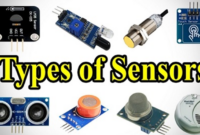Definition of Transistors and Types of Transistors – Transistors are semiconductor components that have various functions such as amplifiers, controllers, rectifiers, oscillators, modulators and so on. Transistor is one of the most common semiconductor components found in electronic circuits. It can be said that almost all electronic devices use transistors for various needs in their circuits. Electronic devices in question such as televisions, computers, cell phones, audio amplifiers, audio players, video players, game consoles, power supplies and others.
The transistor was first discovered by three physicists who came from the United States at the end of 1947 is a bipolar transistor type. They were John Bardeen, Walter Brattain, and William Shockley. With this invention, electronic devices which at that time were large in size could be designed in smaller and portable packages (can be carried anywhere). The three physicists received the Nobel Prize in Physics in 1956 for the discovery of this transistor. However, before the three American physicists discovered the Bipolar Transistor, a German physicist named Julius Edgar Lilienfeld had patented a Field Effect Transistor in Canada in 1925, but Julius Edgar Lilienfeld never disclosed the results of his research either in writing or in his prototype device. . In 1932, a German inventor named Oskar Heil also registered a similar patent in Europe.
Along with its development, transistors have been designed with various types of designs with unique current flow and controller features. There are types of transistors that are in the OFF condition until the Base terminal is given an electric current to turn it ON while there are other types that are in the ON condition so that an electric current must be given to the Base terminal to turn it into an OFF condition. There are also transistors that require a small current and a small voltage to activate it but there are those that only require a voltage to operate it. There are other transistors that require a positive voltage to trigger the controller at the Base terminal while there are transistors that require a voltage as a trigger.
Transistor Types
In general, transistors can be classified into two large families, namely Bipolar Transistors and Field Effect Transistors (Field Effect Transistors). The main difference between the two groupings lies in the input (or output) bias that used. Bipolar transistors require current (current) to control the other terminals while Field Effect Transistors (FET) only use voltage (no current required). In operation, the Bipolar Transistor requires a hole carrier charge, and the FET electrons only need one of them.

The following are the types of transistors along with a brief explanation.
1. Bipolar Transistor (BJT)
Bipolar Transistor is a transistor whose structure and working principle require the transfer of the carrier, namely electrons at the negative pole to fill the lack of electrons or holes at the positive pole. Bipolar comes from the word “bi” which means “two” and the word “polar” which means “pole”. Bipolar transistors are also often referred to by the abbreviation BJT which stands for Bipolar Junction Transistor.
Types of Bipolar Transistors
Bipolar transistors consist of two types, namely NPN transistors and PNP transistors. These three transistor terminals include the Base, Collector and Emitter Terminals.
- NPN transistors are bipolar transistors that use a small current and a positive voltage at the Base terminal to control the flow of a larger current and voltage from the Collector to the Emitter.
- PNP transistors are bipolar transistors that use a small electric current and a negative voltage at the Base terminal to control the flow of a larger current and voltage from the Emitter to the Collector.
The Bipolar Transistor (BJT) symbol can be seen in the image above.
2. Field Effect Transistor (Field Effect Transistor)
Field Effect Transistor or Field Effect Transistor which is abbreviated as FET is a type of transistor that uses electricity to control its conductivity. What is meant by the electric field here is the electrical connection provided at the Gate terminal (G) to control the flow of current and voltage at the Drain terminal (D) to the Source terminal (S). This Field Effect Transistor (FET) is often also referred to as a Unipolar Transistor because its operation only depends on one charge carrier, whether the charge is an electron or a hole.
Types of Field Effect Transistors (Field Effect Transistors)
There are three types of FET transistors, namely Junction Field Effect Transistor (JFET), Metal Oxide Semiconductor Field Effect Transistor (MOSFET) and Uni Junction Transistor (UJT).
- JFET (Junction Field Effect Transistor) is a Field Effect Transistor that uses a reverse biased p-n junction as an insulator between the Gate and the Channel. There are two types of JFETs, namely P-channel (p-channel) and N-channel (n-channel) JFETs. The JFET consists of three terminals, each of which is named Gate (G), Drain (D) and Source (S).
- MOSFET (Metal Oxide Semiconductor Field Effect Transistor) is a field effect transistor that uses an insulator (usually using Silicon Dioxide or SiO2) between the Gate and the Channel. This MOSFET also consists of two types of configurations, namely the Depletion MOSFET and the Enhancement MOSFET, each of which is also divided into a P-channel MOSFET (P-channel) and an N-channel MOSFET (N-channel). MOSFET consists of three terminal legs, namely Gate (G), Drain (D) and Source (S).
- UJT (Union Junction Transistor) is a type of transistor that is classified as a Field Effect Transistor (FET) because its operation also uses an electric field or voltage as a controller. Unlike other types of FETs, UJT has two Base terminals (B1 and B2) and 1 Emitter terminal. UJT is used specifically as a controller (switch) and cannot be used as a booster like other types of transistors.
read also Definition of Active Electronic Components and Passive Electronic Components



